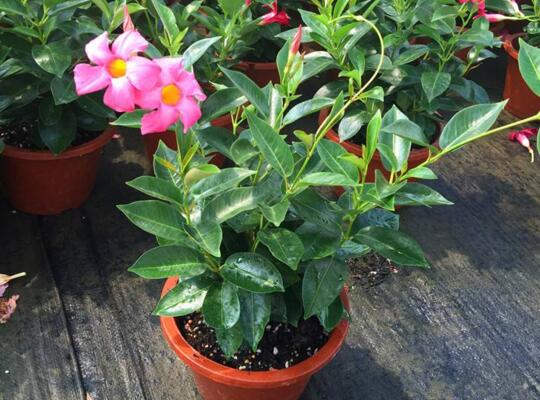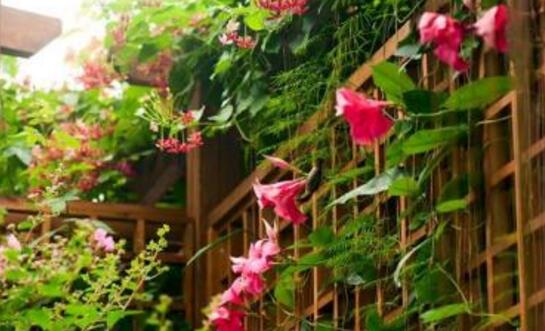How to water plum blossom, the method of watering plum blossom / water quantity control according to season
Watering is a necessary operation in plant culture, because water is one of the main nutrients of plants. Although plum blossoms are more drought-tolerant plants, water is still indispensable. About how to water plum blossoms, what is the method of watering plum blossoms? Next, the editor will take you to learn about it.
How to water the plum blossom / see dry watering

When watering plum blossoms, we must maintain the principle of dry watering, and it is best not to water too much, if too much water is easy to cause root rot, so we should pay attention to this. In addition, the water demand of plum blossoms varies from season to season, which is described in detail below. Let's take a look at it.
Second, the method of watering plum blossoms
1. Plum blossoms are watered in spring
Spring is a more suitable season for plum blossom growth, so the demand for water is still relatively large, but it is still necessary to see the principle of dry watering. There is another point to pay attention to in spring. Spring is the rainy season, and there are more rainy days, so we should pay attention to the timely removal of stagnant water.
two。 Plum blossom watering in summer
In the method of watering plum blossoms, there is a greater demand for water in summer than in spring, because the weather is hot, so water evaporates relatively quickly, so it is watered almost every day. One thing to pay attention to in summer is that it is best to water it every morning, so that the temperature difference is not too big.
3. Plum blossoms are watered in autumn
In autumn, when the temperature drops slowly, we have to appropriately reduce the amount of water, usually every other day or every few days, according to the climate, as long as the soil is moist.
4. Plum blossoms are watered in winter
Water evaporates more slowly in winter, so it is rarely watered, and only when the weather gets warmer at noon every day, spray a little water on the branches of plum blossoms with a spray can, so that it can be better absorbed.
Third, plum blossom watering too much how to do / timely reasonable accumulation of water
In the above, the editor mentioned that stagnant water is strictly prohibited when watering plum blossoms, otherwise it is easy to cause the root of the plant to rot. If we have watered too much, we should get rid of the stagnant water in time.
How to water the plum blossom, the watering must be thoroughly / with watering time and water consumption.
Lamei blossom is a kind of plant with strong drought tolerance, it can survive for a long time in dry environment, but if you want it to grow normally, it is obviously not advisable to make it short of water for a long time, so how to water it? Let's take a look at the watering method of plum blossoms.
How to water the plum blossom
Generally speaking, watering the plum blossom should be based on the principle that it is not dry or watered thoroughly, which means that the soil is not completely dried and not watered, and each watering should ensure that the upper and lower parts of the soil are moist, and the specific time is adjusted according to climate change on this principle.
First, watering in spring
Potted plants: if potted plants are planted, how to water the plum blossoms in spring? The answer is every 2 days, pay attention to check the dry and wet condition of the soil, if the soil is completely dry, it should be watered as soon as possible.
Open field cultivation: if the plum blossom is planted in the courtyard, it is usually watered every three days in spring, but it can be stopped during the rainy season because Rain Water can ensure that the plum blossom gets enough water.
Should the plum blossom be watered every day in summer
Because the summer temperature is higher, the water evaporates quickly, so the watering at this time is generally once a day, but it does not need to be watered every day, specifically it should be determined by the wetness of the soil, and what we need to pay attention to at this time is to spray water to the leaves to ensure air humidity.
Third, autumn watering
The temperature will gradually drop in autumn, and it is usually watered every two days after October to ensure that the plum blossom can get the right amount of water before flowering. If the soil is completely dry and white, the flowering will be seriously affected.
How to water the wax plum blossom in winter
Although winter is the season of Lamei blossom, it will consume some nutrients and water, but the watering times and dosage do not need too much at this time. Generally, it can be watered once every 4-5 days, and the amount of water should be half of the usual amount. When the temperature is below minus 10 degrees, stop watering.
What happens if the plum blossom is watered too much?
If when watering, too much water will lead to stagnant water, and the plum blossom is very afraid of waterlogging, which will cause the root to soak in the water, unable to breathe normally, so that the root will rot, and the growth of the plum blossom will be hindered. It will not only cause disease, but also lead to plant death.
When watering too much, we should discharge the stagnant water as soon as possible, and check whether the soil drainage is good, if the soil consolidation can not discharge the excess water, we should change the soil in time to avoid the water can not reach the lower part of the soil after watering.
Watering and fertilization methods of potted plum blossoms
Plum blossoms like sunny and well-ventilated environment, good fat and fear of waterlogging, more resistant to cold. The management of potted plum blossom is more complicated than that of ground planting, but as long as the method is proper, it is not very difficult. The key point is how to water and fertilize.
(1) watering: plum blossom watering should be timely and appropriate, do not dry, do not water, do not be too wet, it is appropriate to wet the basin soil. Too dry and too wet will lead to fallen leaves. From April to June, the plum blossom just sprouted and needed little water, so it could be watered once every few days. After that, with the increase of air temperature and the growth of branches and leaves, the amount of water should be gradually increased. In order to prevent the branches and leaves from growing, the basin soil should be on the dry side at this stage. From July to September in ②, due to strong light, high temperature and large evaporation, in addition to watering once every afternoon, some dry pots should be watered in the morning. At this stage, dry watering should be achieved to prevent dry leaves. From October to March of the following year, the climate of ③ changes from cool to cold, and the principle of this stage is to keep the basin soil moist. In the flowering period to slightly increase the amount of water, but also can not cut off the water, the full flowering stage to control moisture, in order to prolong the flowering period.
(2) fertilization: reasonable fertilization can promote the flowering of plum blossom, make the plum blossom grow vigorously and prolong its longevity. At the beginning of January, when plum blossoms are budding, one quick-acting thin fertilizer should be applied to promote the blooming of plum blossoms. However, in order to prevent fertilizer damage, water should be watered again the next day. When changing pots after flowering in March, mature and long-acting organic fertilizers, such as cake fertilizer and poultry manure, were applied for the gradual absorption of potted plums. A thin topdressing was applied in April for the growth of branches and leaves in spring. From mid-late June to early July, 10 days after the new branches stopped growing, rapidly available phosphorus and potassium fertilizers, such as calcium superphosphate and potassium capture, could be applied combined with irrigation to promote flower bud formation. This fertilizer can not be applied too early, too early often promote the growth of new buds, which is disadvantageous to the formation of flower buds. Stop fertilizing in summer, and do not apply fertilizer during flowering.
- Prev

How to raise potted fragrant vines, breeding methods and matters needing attention / moderate temperature
The fragrant vine native to the American tropics, because of its fragrance and colorful flowers, many people like to raise it in China, but compared with other plants, it is not easy to raise it well.
- Next

How to raise the fragrant vine in winter? can the vine survive the winter outdoors in winter / stop fertilizing
It is well known that the most suitable temperature is 20-31 degrees. However, in most parts of China, the winter temperature is not within this range, so can the vine survive the winter outdoors? The answer is yes. Raising fragrant vines in winter will be slightly different from other seasons.
Related
- Fuxing push coffee new agricultural production and marketing class: lack of small-scale processing plants
- Jujube rice field leisure farm deep ploughing Yilan for five years to create a space for organic food and play
- Nongyu Farm-A trial of organic papaya for brave women with advanced technology
- Four points for attention in the prevention and control of diseases and insect pests of edible fungi
- How to add nutrient solution to Edible Fungi
- Is there any good way to control edible fungus mites?
- Open Inoculation Technology of Edible Fungi
- Is there any clever way to use fertilizer for edible fungus in winter?
- What agents are used to kill the pathogens of edible fungi in the mushroom shed?
- Rapid drying of Edible Fungi

